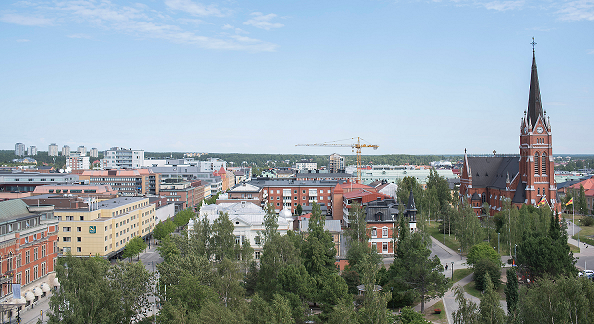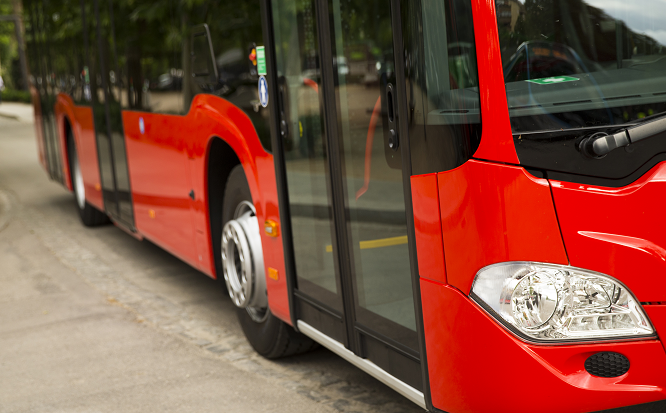Smart bus priority leads to a better traffic flow
Luleå Municipality (located in the north of Sweden) has long had a priority system to give buses a green light at traffic signals and thus promote public transport in the city. In the past, older technology based on radio transmitters has been used, which send out priority requests to a receiver at the traffic signal when the bus approaches the intersection. But an outdated system can create some problems, as it does not consider whether the bus actually needs priority or not. In many cases, this can create an undesirable traffic situation and contribute to traffic jams, which ultimately also affect local traffic timetables. Luleå Municipality wanted to take its bus prioritisation to a new level by introducing intelligent bus prioritisation with the help of SWARCO Smart Priority.

SWARCO Smart Priority is a cloud-based solution for customised priority requests in traffic signals based on the bus position as well as other input data provided by the vehicles which is then weighted between different vehicles in the system. When a bus approaches a traffic signal, a priority request is sent to Smart Priority and processed based on the rules that have been set. The request is then forwarded to the traffic controller which processes the request according to the configuration and existing algorithms. The priority request sent out from the bus is based on GPS data from an on-board device on the bus or Smart Priority's mobile app. This means that the bus is only given priority if it is necessary, for example, to keep to the timetable.
The system has a web interface that gives an overview of the traffic flow and provides real-time data. The interface also makes it easy to change or add routes and traffic signals, adjust detection zones, or change the parameters that controls whether the bus is given priority (e.g., timetable, traffic situation, number of passengers, special events, road works etc.). This makes it possible to adapt the solution to each customer's needs.
The installation covered 17 intersections in the city Luleå and was carried out in three stages, the first two in the less busy and sensitive areas outside the city centre to avoid excessive traffic disruption during the tests, and the third involving the city centre. An advantage of the project was that Luleå Municipality's traffic signals were already connected to SWARCO Cloud, which meant that the municipality did not need to make any hardware investments to communicate from Smart Priority out to the traffic controllers. Smart Priority's app was put to great use during the tests, as a regular passenger vehicle could be simulated as a bus to test that the priority was working properly.

In the post-installation phase, a clear difference in traffic flow was noticed, especially at previously heavily trafficked intersections. Buses that were on time or behind schedule were given priority to further promote public transport, while Smart Priority did not give priority to buses that did not need it, creating a smooth flow of traffic. The solution not only helped improve traffic flow, but also made it easier for the customer to collect and compare traffic data, and to identify and resolve any incidents and problems more easily than before, when an engineer usually had to be dispatched to the site to identify the problem.
The success of the project required cooperation, good communication, planning and flexibility between the various parties, including Luleå Municipality, LLT (Luleå Public Transport), the third-party company Trivector, which manages the on-board units on the buses, and SWARCO Sweden. Continuous checks are still on-going between Luleå Municipality and SWARCO to ensure that everything is working as it should and due to the success of the project, Länstrafiken (Public Transport in the County) in Norrbotten has also shown interest in Smart Priority which opens up the possibility for smarter bus prioritisation across the county.